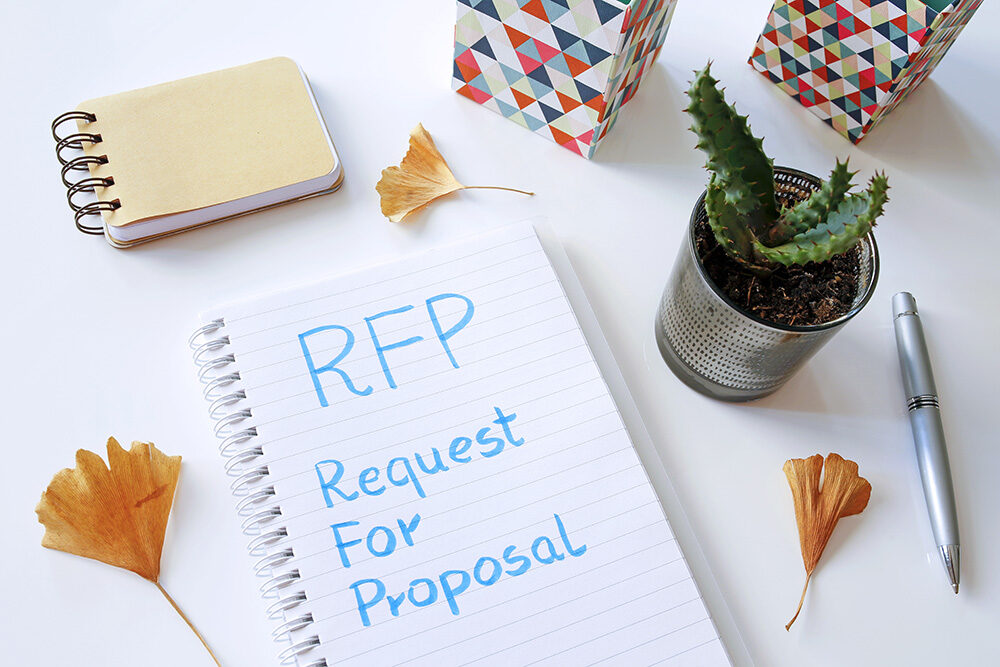When you take your business online, a well-developed website becomes a necessity. No matter the industry or niche your business belongs to, a well-written request for a proposal is necessary. That is why it is so important to be 100% sure as to how to approach the matter correctly.
These days, the primary source of any type of information is the Internet. However, when you start your search of a worthy website rfp sample, all you may come up with is a list of basic examples that seem anything but productive. That is when you begin to wish there was a complete guide to lead you through the whole process successfully. Rest assured since it is precisely what we are going to provide you with!
RFP: Definition
If it is your first website creation, you may not be fully aware as to what a request for proposal is and how a useful website rfp template should look like. It means that defining the matter is the first thing to discuss. The definition of RFP stands for Request or Proposal. It is important that you realize that such a request is not connected to web development only; it is the same form suitable for any business or industry.
When you compose a request for a proposal, you list all the needs, criteria, and requirements necessary for the business development. It is a kind of formal bid or proposal that all the companies use to find the best vendor to cooperate with.
Request for proposal website design is bound to shed some light as to what the company is looking for, whether it is a traffic increase or online sales improvement. Also, if there is any room for bidding, the matter should be correctly stated in the form. When you get proposals from different vendors, it is a lot easier to find the best fitting one if you are aware that all the requirements are covered.
Some companies think that the more complex the request is, the better. Nevertheless, it is a misleading assumption since, in the majority of cases, all that is required is correct information and well-put requirement so that you find the services to satisfy the online development needs.
Is a Well-Composed RFP Important?
No matter the project that you are currently working on, there are usually two parties involved in the development: the one that orders the project and the other that completes it. Even the slightest misunderstanding can result in the outcome that would turn out to be dissatisfactory to either party.
The better your requirements laid out in the request, the better understanding the development team will have as to how to approach and fulfill them successfully. Apart from that, when you are choosing between a few vendors, you can see different approaches towards the same task, which will allow you to pick the one that suits you and your business best.
Also, a vague request that does not enlist all the requirements and needs clearly may scare potentially productive vendors away. What is more, overly restrictive requests can do the same. So, it is not the best outcome to hope for, which means that a well-thought request for proposal matters greatly if you wish your business to thrive and your website to be ahead of all the competitors.
How Do You Transform an Average RFP into a Successful One?
According to the statistics, many development agencies ignore the requests for proposals that they deem as uninformative. When the agency can’t determine as to what is required from the team, it chooses to let the request pass by its attention. Such an approach should alert those companies that are interested in finding the best development team within a set deadline.
Is there a sure way to make an average request for proposal sound like a successful one? There are a few. To begin with, you need to realize the simple objective – asking questions is not enough. It is mandatory that you provide useful information on the project as well. Any knowledge that you possess can turn out to be crucial when it comes to the design creation and website development.
When all the company’s goals are stated clearly, and all the requirements are discussed, it is up to the agency to decide as to whether or not to agree to the cooperation. In the majority of cases, the role of the agency is understated, and it is one of the most common mistakes to avoid. Surely, you wouldn’t want to lose good cooperation just because you failed to communicate with the agency.
When Should You Start to Work on a Website RFP Creation?
Some companies are often faced with the question as to when a request for proposal web development should be created. If it is a new website that you are working at or you require a redesign and there is no vendor in mind, then the issue is quite apparent. However, even if you have an agency that you have cooperated with already, it is never a waste to evaluate other options.
When you have an excellent RFP created and send it out, you will get a better understanding of what you can get budget- and quality-wise since new, better agencies are appearing in the market every day. So, it is always a good thing to explore new horizons to find what’s best for you.
Are There Times When You Do Not Need an RFP?
There are a couple of reasons which may force you to reconsider the request for proposal creation. The truth is that if you initially know that the budget you operate with is limited, the possibility that it is going to attract the attention of some major firms is slight. The same rule applies to the situation when you are well-aware of some internal problems of your website. It is advised to solve the existing issues in the first place and then opt for the request for proposal creation.
Website RFP Structure: The Basic Rules
It is obvious that every company wants the project to be the most successful and profitable one. However, apart from browsing through countless website RFP examples, it is essential to understand the structure of a productive and functional request. Here are the main points to brood upon:
Introduction
In many cases, when the introduction is ill-composed, the chances that the potential vendor will carry on with the request are not that aspiring. That is why a lot of thought and consideration should be put into it. You need to state it loud and clear as to the objectives you have in mind, the requirements you consider necessary, and any other details that you deem important. The better the layout of your goals is, the better understanding will the vendor have as to whether or not they are capable of completing it successfully.
Company overview
After you are done with the project overview, you should drop a few lines about your company as well. Some companies choose to write out the whole history of the business, but it is not necessary. All you should point out is the exact amount of information for those who have never heard about you to get a clear vision of who you are and what your business is about.
Define the target audience
It is always an excellent decision to describe your target audience in the RFP. The vendor you are willing to work with should realize which category you view as possible customers and clients of the designed website. All the profitable sites are designed in such ways that they are not only appealing but also simple to operate and serve the specific needs of the target category.
When we are talking about marketing and sales, you should also let the vendor know about what types of sales you are going to be involved in and so on. Details like that matter significantly, but for some reason, companies that compose these requests tend to leave them out.
Point out the objectives
This one may sound like an obvious point, but it needs to be brought up in detail too. It is crucial to point out not only the primary objectives of the project but the secondary and even tertiary ones. The fact is that if your website is aimed at sales increase, it should be designed other than the one that is created to educate clients.
Current situation description
If it is a new rfp website submission, you may skip the step. However, if it is a redesign request, the point should not be treated lightly. When a company is looking for a website update, it means that something is not working well or not working at all. If there are any drawbacks to your current site that you are aware of, you should state them clearly so that they can be fixed or eliminated.
Website’s Functionality
Some companies confuse the website’s functionality with the website goal. However, the sections differ greatly, and if either feature is skipped, the whole project can fail. The thing is that the functionality of the website is the way you want it to look as well as to act. The more specific the instructions are, the easier it will be for the agency to achieve the set goals.
Apart from that, the list of all the features and functions you want to be included will grant the chosen agency an idea as to how much such a website can cost. If you are ready to provide some examples, point them out. Also, it is crucial to distinguish between mandatory and optional features.
Very often, the functionality chapter becomes the longest throughout the request. Nevertheless, this fact should not scare you since both parties involved will benefit from it. No development agency wants to get involved with a potential project that the team is not qualified to fulfill. Besides, no business wishes to pay for something that does not reflect the objectives and does not operate in an intended way.
Think of a sitemap
It is not an exception when a company concludes that a sitemap is something that the web design development agency is bound to come up with. It is one of the mistakes that you should try to avoid. The fact is that the business runner is the one that understands its purposes clearly. That is why enlisting the number of pages a website should have will grant the development firm an advantage to complete the project successfully.
It is up to the site owner as to whether or not he or she wants a potential user to linger on the site and come back later. The website should be informative and straightforward to use. Besides, it should be up to date and appealing. Depending on the industry you are involved in, you can introduce additional pages into the website, but the following are the most common and usually mandatory ones:
- Home page;
- Our services;
- Contact us;
- Our blog;
- About us.
Budget details
Of course, nothing comes for free, and web design is certainly not the exception. Depending on the brand and your financial possibilities, a budget can and should be formed. It is easy to underestimate the fact that many agencies skip requests without a set budget. The truth is that sometimes, the objectives and requirements are too great, and the price offered does not cover them. In order not to disperse its attention, reliable firm weights both and then forms an opinion.
It is not that simple to come up with a set budget if you are not experienced with forming one and if it is your first project. However, you surely know the range that you can afford to spend on the website, and, in many cases, it is more than enough. Also, a budget chapter should be put somewhere at the top of the request; right below the requirements would be the perfect placing to consider.
It sometimes occurs that the website requirements and the price range do not coincide, and a trusted agency can offer you something in between instead. In case it is a startup that we are discussing, such an offer may come in handy. However, you should keep in mind that a request for a proposal is not intended for price shopping. If you wonder about how to form your budget, you can start with browsing through related forums and similar resources. When you have at least an approximate price in mind, you can carry on with the request.
State proposal requirements
This point might be easily overlooked, especially if you haven’t cooperated with a development team before. The thing is that no one wants to waste precious time, and just like the agency filters your offers, so you should filter its. That is why listing all the requirements as to the proposal is a necessary option too.
Generally, you can add the following requirements:
- Means of communication (email address, phone number, website);
- Years on the market;
- Clients it has cooperated with;
- User references;
- List of successfully finished and launched projects;
- Number of people involved in one project;
- The way the project is usually approached;
- Approximate time spent on average website creation.
You can increase the list depending upon your needs and requirements. The more you know about the agency, the better will be your understanding as to whether you should start the cooperation or keep on looking.
Setting the deadlines
It is natural to assume that the only type of deadline is that of the website creation. However, the reality is more complex, and a productive request for proposal should include several other timelines too.
Request release date – if you state the release date on the request, the potential agency will know that the RFP is new or old. In case the request is out of date, there is no use in considering it.
Firm response deadline – it is necessary to give the firm clear instructions as to when you are expecting to hear from them. When the agency does not respond to you within that set deadline, there is no use in further consideration of the cooperation possibility.
Vendor selection – no vendor would like to waste time waiting for your possible response endlessly. You need to grant the vendor a definition of the deadline within which you will reach to them should they interest you.
Project kickoff date – when you settle with the agency, you should also give them instructions as to the date the team should be gathered and the work on the project should start.
Approximate launching date – it is true that launching a deadline can be postponed a bit; however, the statement of a date that you expect the project to be ready would serve as a useful alarm for the team.
These are most of the possible deadlines you should point out to a potential vendor. In case you feel that there are a couple more that you would like to add, you can easily do so. It is vital to note: the more details you give out, the better project you will get upon the completion.
Provide examples
It is true that the website you are sending the requests for is intended to be one of a kind. However, it is always a great idea to point out a sample that you feel related to. Sometimes, the request shows the picture that is not complete but which a couple of websites provided as an example of what you are looking for. It will give more precise directions. It is up to you to decide how many examples you want to present; it can be a single website or a couple of them.
Website RFP Structure: The Details
When you have the base ready, you may sigh with relief, but that is not where you should stop. It is vital that you keep working on it until all the necessary details are pointed out, no matter how minor they may seem. There is a list of details that also matter when working on a successful request for proposal:
Honesty is the best policy
If you think that the rule does not apply to web design and the business industry in general, you are mistaken. The fact is that the future design depends greatly upon how carefully you address it. Even if you have a working website with a great design, it is crucial to approach the matter critically. The thing is that the better current flaws are highlighted, the more flawless the future design will be. You should not be ashamed of bugs or errors that you want to avoid or eliminate.
Be straight
It seems like a lot of work should be put in a proposal request for something as common as website design. However, you are not supposed to approach the writing as if it was a poem. You need to present everything explicitly without anything unnecessary added to the text. The more precise the outline is, the clearer the requirements and other details are, the higher are the chances of successful and, if necessary, profitable design as the end result of cooperation.
Ask the right questions
This one may seem pretty vague, but it is not. Admittedly, it may be difficult to tell the right questions from the wrong ones. However, the matter is basic at its core. When you are working on your initial proposal request, you will come up with a list of questions in the process, and all you should do is write them down.
When the request is finished, you can look through the questions written out and make sure that none of them is limited in any way. A development team should not feel like they are working with someone who is tied to specific ideas, tools, or programs unless it is what you intend to.
Open-minded and informative questions are the ones that fit the ‘right questions’ category. You need to give the agency a chance to present you with a list of alternative options to choose from.
Claim your personality
Since every design is individual, it is advised to show the vendor the personality you are seeking. When it is strictly business, or business and pleasure, the vendor should be able to feel it to create the website design that corresponds to that vibe.
Request for Proposal and Reliable Vendors
Unless you have a vendor in mind, there is a lot of research to do. The fact is that no matter how great the proposal request is; if it gets to an unreliable vendor, there will be little use of it. In case you are interested in worthy candidates only, here are the tips to consider:
Google it – it may sound obvious, but any reliable development agency will have a website that always comes first. If they can design a functional and user-oriented website for their own services, you can carry on and send them the proposal request.
Check the credits – whenever you visit a website and the design, as well as the general feel of it, appeals to you, all you need to do is to check the credits to figure out who designed it. After that, you can reach out to the vendor with your proposal request.
Use social media – these days, social media are a source of all kinds of information, and web design is not the exception. All self-respecting vendors usually advertise their services on social media. Besides, you can always find enough feedback on their design development skills.
Be selective – sending your proposal request to too many vendors will bring in a lot of unnecessary information into your life. That is why it is a great time to become a little picky. Send your request for a proposal to about six agencies and then try to choose among them. If neither agency suits your needs, you can repeat the process.
RFP Is not a Request for Pricing
Lastly, it is crucial to remember that every agency values their time greatly. In case all that you are interest in is the cost for the services, it is best to call them directly rather than bother the agency with a request for a proposal. In the long run, you may be not really interested in potential cooperation, but the vendor would need to get through lots of information before giving you the price. It would be considered a poor tone.
To sum all up, it is safe to say that when a company is interested in great website design, a request for a proposal is a pure necessity. No matter what others may state, it is not that difficult to come up with one. To start with, there are countless templates on the Internet to look through. Apart from that, if you follow all the steps described in the guide, a successful outcome will be granted!








